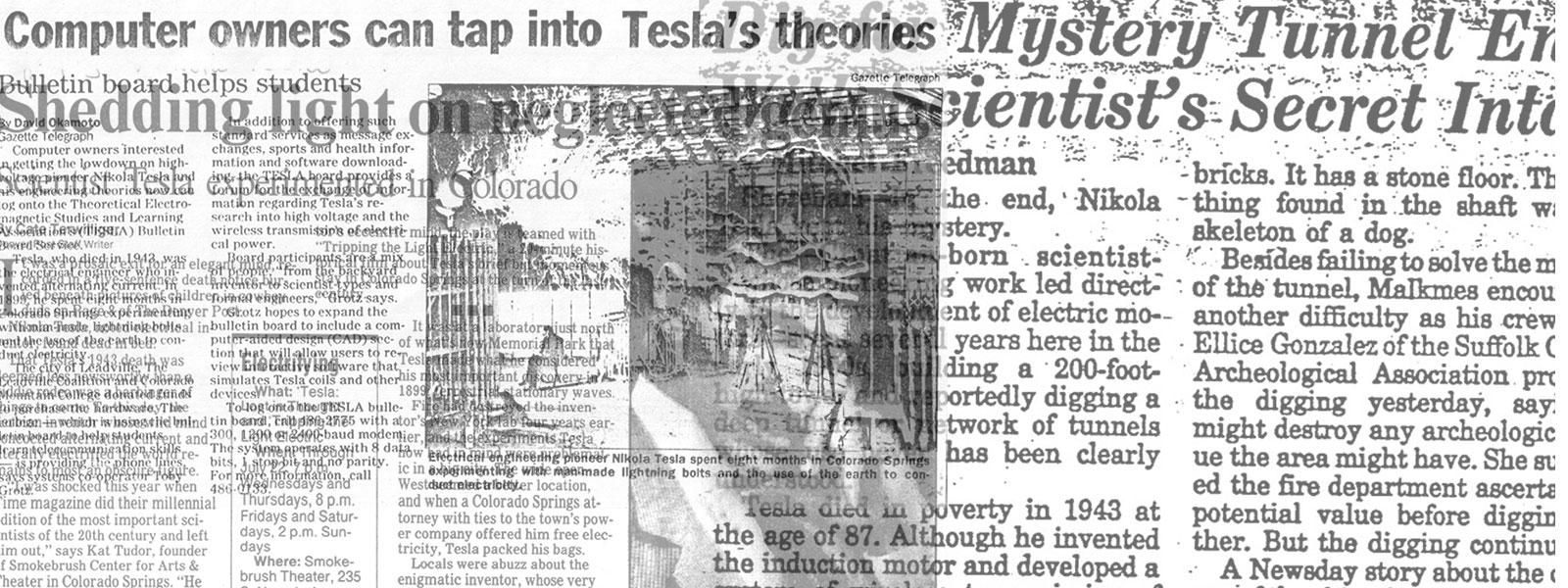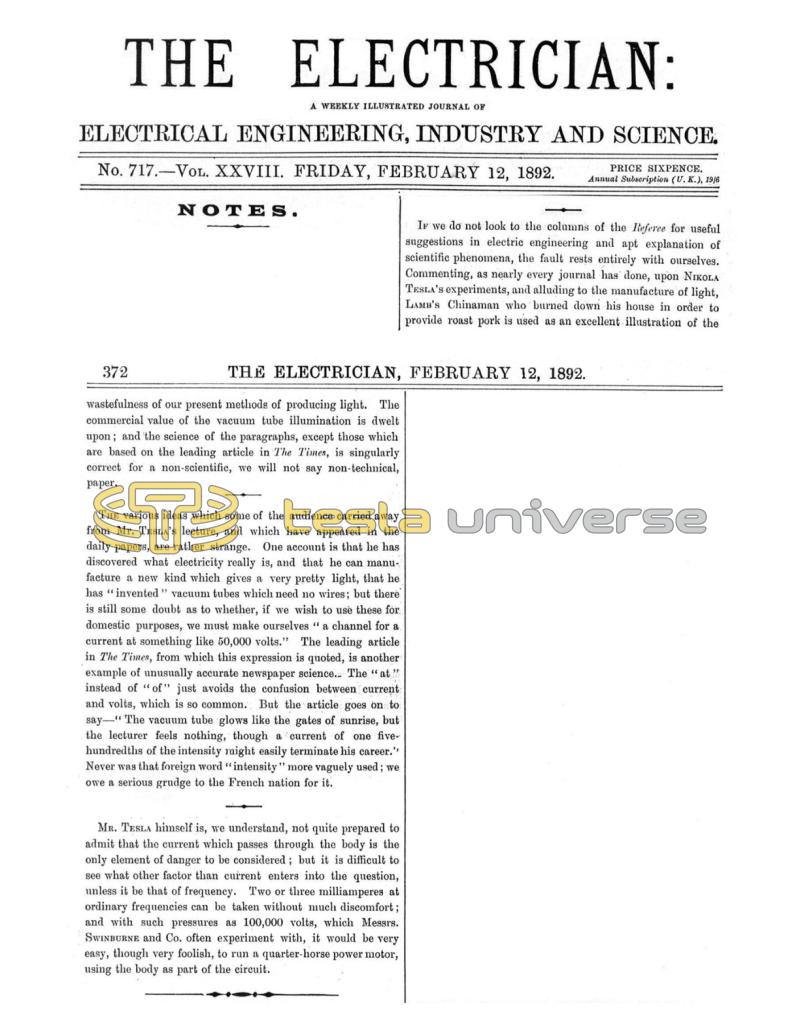
Nikola Tesla Articles
Notes - Tesla's Vacuum Tube Illumination
If we do not look to the columns of the Referee for useful suggestions in electric engineering and apt explanation of scientific phenomena, the fault rests entirely with ourselves. Commenting, as nearly every journal has done, upon Nikola Tesla’s experiments, and alluding to the manufacture of light, Lamb’s Chinaman who burned down his house in order to provide roast pork is used as an excellent illustration of the wastefulness of our present methods of producing light. The commercial value of the vacuum tube illumination is dwelt upon; and the science of the paragraphs, except those which are based on the leading article in The Times, is singularly correct for a non-scientific, we will not say non-technical, paper.
The various ideas which some of the audience carried away from Mr. Tesla’s lecture, and which have appeared in the daily papers, are rather strange. One account is that he has discovered what electricity really is, and that he can manufacture a new kind which gives a very pretty light, that he has “invented” vacuum tubes which need no wires; but there is still some doubt as to whether, if we wish to use these for domestic purposes, we must make ourselves “a channel for a current at something like 50,000 volts.” The leading article in The Times, from which this expression is quoted, is another example of unusually accurate newspaper science. The “at” instead of “of” just avoids the confusion between current and volts, which is so common. But the article goes on to say - “The vacuum tube glows like the gates of sunrise, but the lecturer feels nothing, though a current of one five-hundredths of the intensity might easily terminate his career.” Never was that foreign word “intensity” more vaguely used; we owe a serious grudge to the French nation for it.
Mr. Tesla himself is, we understand, not quite prepared to admit that the current which passes through the body is the only element of danger to be considered; but it is difficult to see what other factor than current enters into the question, unless it be that of frequency. Two or three milliamperes at ordinary frequencies can be taken without much discomfort; and with such pressures as 100,000 volts, which Messrs. Swinburne and Co. often experiment with, it would be very easy, though very foolish, to run a quarter-horse power motor, using the body as part of the circuit.
